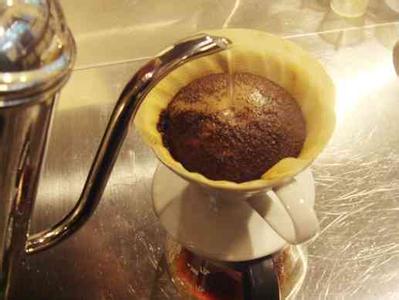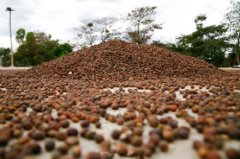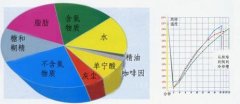High-quality coffee common sense coffee cup test Cupping Tasting
Recently, I saw many cafes holding "Cupping" activities, which attracted a large number of coffee lovers to participate enthusiastically. Seeing that the coffee industry is so prosperous and coffee lovers are so studious, I can't help but feel comforted that the efforts of coffee people have not been in vain. But in the case of Cupping, is it a sign of professionalism or a gimmick for businesses to attract customers? I hope you can make your own judgment after reading this article. Don't be carried away by Cupping. There has been a saying that "Cupping is not everything" before. I hope you can understand it correctly and play coffee well.

Cupping began in the United States around 1980 as a sampling process adopted by coffee companies to ensure the quality of coffee, a secret technology designed to identify major flaws and avoid buying unusable coffee.
Now, Cupping has evolved from fraud prevention in the past to today's identification, pleasure, formulation and competition. SCAA published "The CoffeeCupper's Handbook" and the coffee flavor wheel cup testing industry has followed the guidelines. What's more, Cupping has become a must-study skill for coffee professionals. The Cupping tables and guidelines of SCAA and COE are the two most commonly used systems in the boutique coffee industry, more or less the same.
When it comes to Cupping, everyone thinks that it is abstract and difficult to learn. In fact, as long as you drink coffee often, practice more, and build a complete coffee flavor memory bank, everyone can become a coffee cup tester. The cup tests the price under the standard process, for several juxtaposed coffee, appreciates the fragrance and taste, it is easy to tell the difference from each other by the aroma and taste, which is very different from drinking a cup of coffee alone.
There are a few things you must know about Cupping:
Standardized baking time and baking degree: the baking time is about 8-12 minutes, this firepower is more balanced, reaching the end of the first explosion to the second explosion, that is, medium-baked full-flavor baking. Not too sharp, caramel and carbonization will not be too dramatic. Cool the plate to room temperature, then leave it in a cool, dry place.
Standardized extraction: cups: clean, tasteless, uniform glass or ceramic cups and lids.
Water quality: clean and tasteless water.
Degree of grinding: slightly finer than or close to the fineness of French pressed coffee powder. Use it as soon as possible after grinding, not more than half an hour.
Concentration: the ratio of grams of coffee beans to milliliters of hot water is about 1:18, that is, 11g coffee powder is extracted with 200ml water.
Water temperature: the extraction water temperature of each cup is 93 ℃, which can be evenly injected and fully soaked.
Soak time: 3-5 minutes, no need to stir. The standardized evaluation cup test environment is clean and tasteless and quiet.
Cup spoon: sipping: the action of cup sipping is exaggerated and not very elegant. It is to use a cup spoon to hold coffee and suck it into the mouth. However, it can improve the taste measurement efficiency of taste and post-nasal smell.
The easy Cup score table has 8 columns:
1. Sample number
2. Taste spectrum and afterrhyme
3. Cleanliness and sweetness
4. Sour taste
5. Thickness
6. Consistency and sense of balance
7. Dry incense or wet incense
8. General evaluation and total score.
Each tested sample bean can be at least 1 cup and up to 3 cups. The general cup test table does not have to be like SCAA's 5 cups or COE's 4 cups.
The six steps of Cupping:
Evaluation of dry incense and wet incense
Evaluation of taste spectrum, aftertaste, sour taste, fullness and balance
Evaluation of sweetness, consistency, cleanliness and overall evaluation
Comprehensive score
Demerit points
Final score
The red tape of international cup testing competitions is daunting, but you don't have to be deterred by it. As long as you master standardized baking, standardized extraction and standardized evaluation, you can also play Cupping at home or in a cafe. Please pay attention to the above three points, can not meet these three points can not be called Cupping. WorldCupTastersChampionship has a bit of the same coffee competition as Cupping, but this competition tests not beans, but coffee drinkers. We can call this activity Tasting.
The contestants in this competition demonstrated to the audience the speed, skill, and accuracy of professionally distinguishing the taste of coffee. Eight groups of coffee are served at the same time, each with three cups of coffee, two of which are exactly the same. No matter what method is used, the purpose of the competition is to let the tasters distinguish the different cup of coffee. If the final result is the same, the player who takes the least time will win. The competition is more about testing the contestants' coffee culture background.
This is the first year to be held in China at the Shanghai New International Expo Center, where you can take a look at how domestic players control this competition, which is extremely challenging to coffee culture. In terms of ways and methods, the requirements for coffee beans in this competition are not as stringent as Cupping, but focus on testing the strength of coffee tasters. Now the so-called "Cupping" in most cafes is even Tasting, so it needs to be corrected here is everyone's understanding of Cupping and Tasting. If you are interested, after reading this article, it will be clear to ask the store the roasting degree and variety of beans the next time you are invited to Cupping, but it is recommended that you do not point it out, so as not to be thrown out as smashing the market. Having said so much, whether it is Cupping or Tasting, we can use a familiar word instead of "everyone to find fault", that is, to find out the difference between beans, in order to choose good beans or good tasters.
I don't think there will be a second person or how much drool from peers if you can replace such a high-end and high-end event like Cupping or Tasting with the words of such a loser, but if the event you organize is neither Cupping nor Tasting, then your coffee shop is just holding a party to find fault, so don't use it to mislead coffee lovers. Tell me a short story I met. A coffee lover told me that he had tested the cup at home. Did I say yes? So powerful! As a result, his answer surprised me (although I didn't wear glasses). He said, "I heard that the cup test is more able to drink the various flavors of coffee, and many professionals are keen on the cup test, but I drank a mouthful of coffee grounds in the cup test, not to mention that it tastes terrible. Finally, it was filtered with filter paper before I could drink it. Me. Cupping is not that simple. Cupping is not that simple. Cupping is not everything. Coffee is mythical by many irresponsible merchants and exaggerated by many pseudo-caffeine fans who want to pretend to be 13. I just want to say: get rid of superstition and start with me.
Important Notice :
前街咖啡 FrontStreet Coffee has moved to new addredd:
FrontStreet Coffee Address: 315,Donghua East Road,GuangZhou
Tel:020 38364473
- Prev

Basic knowledge of fine coffee the three levels of coffee roasting
Coffee roasting is a science that is easy to learn but difficult to master. Like cooking, anyone can cook food and eat it to satisfy hunger. But what level of food do you cook? How far and how big is the difference between "cooking" and "chef"? The same is true of roasted coffee. Being able to bake coffee does not mean that it produces good coffee. We can simply bake the coffee
- Next

Summary of training of Coffee Roasters with General knowledge of Fine Coffee
1. Mixing of coffee beans people need to piece together coffee from different places for several different purposes. The ideal goal, of course, is to piece together a coffee that tastes better than any of them. But generally speaking, single-origin Arabica coffee is enough to produce a good export flavor of coffee;, with a soft taste and a sweet aftertaste. So
Related
- Beginners will see the "Coffee pull flower" guide!
- What is the difference between ice blog purified milk and ordinary milk coffee?
- Why is the Philippines the largest producer of crops in Liberia?
- For coffee extraction, should the fine powder be retained?
- How does extracted espresso fill pressed powder? How much strength does it take to press the powder?
- How to make jasmine cold extract coffee? Is the jasmine + latte good?
- Will this little toy really make the coffee taste better? How does Lily Drip affect coffee extraction?
- Will the action of slapping the filter cup also affect coffee extraction?
- What's the difference between powder-to-water ratio and powder-to-liquid ratio?
- What is the Ethiopian local species? What does it have to do with Heirloom native species?

